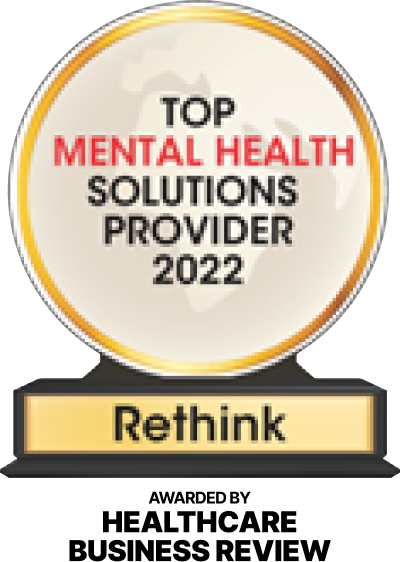Stress—It can be a familiar feeling for many on a day-to-day basis, especially in the workplace. In fact, 40% of workers reported their job was very or extremely stressful.
That’s nearly half of the U.S. workforce experiencing high stress because of their job and the effects that come with it, including lack of sleep, hostility, physical pain, and absenteeism. Beyond these personal effects, stress results in as much as $300 billion in lost productivity each year for U.S. companies.
The reality of stress and its impact on an organization goes farther than the influence managers and leaders have over their small team or an individual employee’s workload. It’s about the culture of the organization, how executives help frame stress in the workplace as well as the tools the company gives employees to handle it. How can executives play a part in reducing workplace stress for their employees? Take a look at the tips below.
Encourage Breaks to Be Part of Your Culture
According to the American Psychology Association, allowing yourself to step away, recharge, and truly relax has a significant effect on lowering stress and increase productivity. Breaks in today’s work culture can sometimes feel few and far between, though, since there is so much to get done from day-to-day. Not only do employees feel like they don’t have time to take breaks, but they also think if they do it will impact the way others view their work ethic. In fact, nearly 20% of North American workers worry their bosses won’t think they are hardworking if they take regular lunch breaks, while 13% worry their coworkers will judge them and 38% of employees don’t feel encouraged to take a lunch break.
Research has shown that working a full day without breaks is a guaranteed way to tank your productivity, hour by hour. Cultivating a culture where breaks are encouraged is a way for executives and leaders in an organization to help employees take a step back and allow the brain to rest and recover. Taking breaks throughout the day has been shown to improve productivity, resulting in better problem-solving abilities, decreased burnout, and ultimately reduced stress for employees. What are some actionable ways to make this happen?
Bring In the Diversions
While diversions at work may seem counterintuitive, giving employees a reason to take breaks and even bond with coworkers while doing so is a great way to help create a culture where breaks are encouraged. Some examples include:
- Taking a walk or walking meetings
- Pool tables
- Ping-Pong tables
- Dartboards
- Dog-friendly workplaces
- Giant Jenga
- “Quiet” or meditation rooms
Create the Expectation of Breaks
Having the types of diversions listed above in the office directly impact your company culture but cannot work alone. It’s important to create an expectation of breaks for your employees as well. Leading by example is a great way to do this. If employees can see their executives taking the time to step back from their work during the day, they likely will as well.
Another way to create a break-friendly culture at your organization is to openly discuss the benefits of breaks or even implement a “break challenge” and have employees track the breaks they take in a day. Reward employees for their participation. At RethinkCare, we recommend taking a 5-10 minute break for every hour worked. You’re welcome.
Implement Flexible Work Schedules
The demands of work and home life can feel overwhelming and stressful when trying to stick to a strict schedule. Easing the worry of “clocking-in” at an exact time or giving employees the ability to run errands over lunch can mean the difference between an employee who is constantly stressed and one who is resilient and productive.
In a recent survey, 73% of employees said flexible work arrangements increased their satisfaction at work, and 78% said flexible work arrangements made them more productive. Trusting employees and creating a culture where completed, quality work is more valuable than time spent in or out of the office helps individuals take ownership of their work and stress less. Some ways you can kickstart this mindset in your organization include:
Create a Flexible Work Policy
Allowing employees to take care of their home life gives them the ability to focus at work so their mind isn’t fixated on other stressors. Whether it be before working hours or in between, creating a flexible work policy benefits companies with a more productive workforce.
Work From Home Options
Trusting employees to complete their work and balance their home life can also include trusting them to complete it from anywhere, including their own home. Remote work options are becoming more prevalent in the U.S. workforce each year, and a recent study found employees who work from home at least once a month are 24% more likely to feel happy and productive at work. Commutes on their own can be stressful for some, and adding a work from home policy, whether it be once a week or once a month, can help ease these stressors for employees.
Invest in Tools to Stay Connected
The key to helping flexible work options succeed? Keep the lines of communication open. Investing in tools like Slack, Zoom, or Google Hangouts make it easier for employees to work from anywhere or step out of the office and still stay connected, productive and accountable. Staying transparent and communicating often is a great way to ease the implementation for these policies, but it’s equally important to set limitations so employees are able to unplug at the end of the day.
Consider Mindfulness Training
Mindfulness is attention and awareness training and a proven way to reduce stress. The act of being mindful allows individuals to be more aware of their thoughts, emotions, and actions, giving them the ability to be more patient, nurture relationships better, manage change, be open, nonjudgmental and more. Mindfulness and meditation practices have grown exponentially in popularity amongst executives and CEOs, including the CEO of Salesforce, Hyatt Hotels, and more. Why? Because it works, and if it’s effective at the executive level, your employees can undoubtedly benefit from its results.
Offering mindfulness training as part of wellness programs can be an effective way to show employees how committed you are to their overall wellbeing. While this is a more significant step than implementing breaks or flexible work schedules, it can help your employees reduce stress and be more resilient each day through daily lessons and resources.
Help employees reduce stress, increase resilience, and improve their wellbeing and performance with RethinkCare’s 250+ science-based digital mini-courses for mindfulness, resilience, relationships, sleep, emotional intelligence skills, and more. Get started with a free demo today!











